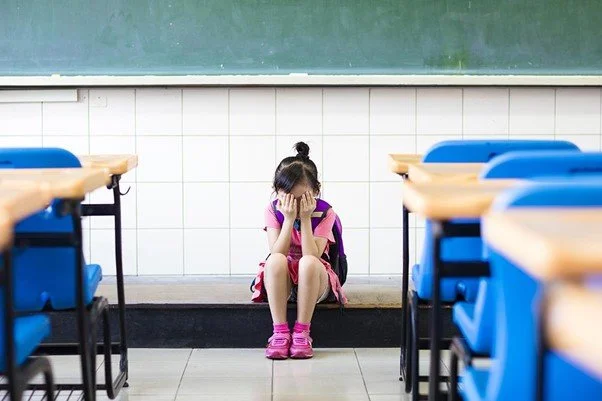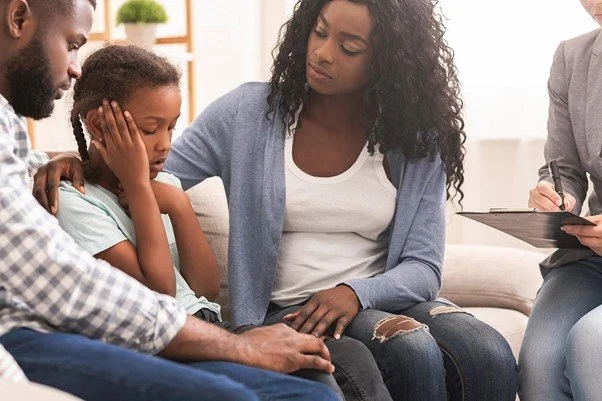The Teacher Trauma Problem in Classrooms (And The Techniques Teachers Can Use to Confront Their Trauma)
The trauma that students feel can often transfer to their teachers, presenting an issue that may be challenging to overcome. Fortunately, there are certain techniques that can help in that regard.
A teacher recently relayed to me their impression of the times. They said that the past two years have been the most important and exhausting years of their career as a teacher.
I believe many teachers worldwide would likely be able to relate to this observation about the global pandemic. From the onset, it has disrupted the regular rhythm of life for billions of people and affected the psychological and emotional wellbeing of many students.
According to recent research, a much higher percentage of students are displaying symptoms of distress and trauma in the classroom. Teachers across the globe have been working to alleviate these symptoms, expending Herculean efforts in supporting their students.
Naturally, the entire situation is bound to have impacted a large proportion of teachers. They likely experienced what psychologists call vicarious trauma.
Vicarious trauma, also known as 'compassion fatigue', often occurs when teachers work with students who have experienced trauma through a process where the emotional distress of students transfers onto teachers, leaving them struggling to cope.
This article aims to equip teachers with tools that may help them overcome their vicarious trauma.
The Teacher Illbeing Challenge
Even prior to the pandemic, it is well known that teaching is a stressful role. A study published in 2014 indicated that about half of teachers intend to stop teaching in five years, while 45% of them mentioned that they won't stay in the profession within the decade.
As a trained psychologist and university researcher, I took an interest in discovering the reasons behind the considerable dropout rate. A quarter of those surveyed stated that the disruptive behaviour that the students display is among the primary causes.
Some of the most prevalent examples of such behaviour include apathy, defiance, and aggression. If you look a bit deeper the student behaviours are often linked to trauma, the effects of which has been showcased in more than a decade’s worth of psychological studies showing that it effects child’s emotional wellbeing, classroom behaviour and capacity to learn.
In particular, when children feel overwhelmed or unable to cope, this can show up in problematic behaviours in the classroom and poor academic performance. Unsurprisingly, the impact of the ongoing pandemic has elevated these symptoms in many students, putting their teachers under additional stress.
Confronting vicarious trauma under today’s circumstances is challenging. However, several potentially useful techniques have emerged courtesy of research conducted by my former PhD student, Dr Tom Brunzell, with myself and Associate Professor Helen Stokes, at the University of Melbourne.
The Techniques
Through Dr Brunzell’s PhD research, we developed a new model to assist teachers who are working with students affected by trauma. This model is called Trauma-informed Positive Education (TIPE). When Dr Brunzell trained teachers in the TIPE model, three key areas improved that served to help the teachers (and, thus, the students):
Increased self-regulation
Improving relational abilities
Gaining access to more psychological resources
Increased Self-Regulation
Here are some techniques that allowed teachers to build up their self-regulation in stressful situations.
Paying attention to their bodies’ escalation signs. This means noticing when you feel your temperature rise, your throat constricts, or your hands get tight, and using this as an early warning sign that you might be able to act in a way you’d rather avoid.
Adjusting your response to apparent resistance in students through a range of techniques, including using brain breaks or humour.
Focusing on breathing in confrontational situations; when you take deep breaths, this creates a calming effect in your nervous system.
Besides the efforts directed towards yourself, the teachers who participated in our research also showed how you can provide your students with opportunities for self-regulation. In particular, they utilised certain techniques that addressed behaviour in the classroom:
Sensory-based strategies, such as using fidget tools or squidgy balls
Lessons interspersed with brief movement breaks (e.g., get up a walk around your desk clockwise and then counterclockwise)
Encouraging movement in daily transition routines (e.g. using music as students leave your class).
For teachers trained in these techniques, they told us that it helped them steer clear of trying to 'take control' in the classroom. In fact, many teachers agreed that their own escalated behaviour might have produced a negative effect relative to what’s desired. Hence, they could see how preventing the escalation in themselves and their students was beneficial.
Improving Relational Abilities
In the face of trauma, students may develop a maladaptive response. This is, sadly, a normal response to the abnormal experience of adversity.
The self-protective reaction can often manifest as a strategy of relational disruption. Students who show this type of response to trauma may challenge the established relationships with their teachers. For example, they may become argumentative or confrontational.
In order to overcome this challenge, the teachers in our study were trained on how to increase their relational abilities. Understanding the factors that enabled healthy relationships was a primary motivation.
Teachers reported that greater knowledge on the subject of attachment reinforced the way they formed and nurtured their relationships. Among the most helpful topics the teachers told us they learnt were the concepts of forming co-regulatory attachments and unconditional positive regard towards the students.
As it happens, it’s easier for teachers to remain focused on the teacher-student relationships than to compromise their positive regard by tolerating disruptions. The methods employed to that end include:
Having a short, personalised conversation with each student to greet them when they come into class (invest time now to save time later)
Intentionally inquiring about a student's emotions and share your own (where appropriate)
Remaining mindful about physical positioning; look to see any signs of students disengaging or getting agitated
Keeping a high level of awareness regarding student's interactions during corrective feedback. Talk to them about the learning pit and how discomfit is normal
Gaining Access to More Psychological Resources
Acquiring resources and skills in the field of social interactions, cognition, and language reportedly has had a positive effect on teacher wellbeing. Learning about character strengths and developing a growth mindset are among the most useful methods I’ve seen in helping teachers who are working in trauma-affected classrooms
In Dr Brunzell’s research, when teachers understood how character strengths contributed to personal values and identity, they were eager to learn more about their own. That’s so they could compare them to the strengths of others in the collective and encourage their students to do the same.
A growth mindset has been demonstrated to be vital in helping students confront any internalised theories about their lack of ability. Teachers saw this technique as instrumental in overcoming whatever issues in students that drove confrontational behaviours.
Reducing the Impact of Vicarious Trauma
Teachers are always looking for ways to best handle issues that may be disruptive to their work and relationships with students. With the additional stress placed on students during the pandemic, these challenges could only be more pronounced.
Vicarious trauma has the potential to worsen the disruption, which is why it's best to address it as soon as possible.
The three techniques presented above could help for this. As teachers equip themselves with more potent psychological solutions to trauma-related issues, it could lead to significant improvements in the classroom.
P.S. Whenever you're ready... Here are three ways for you to dive deeper into my work on wellbeing and find a range of activities you can use in the classroom:
1) Join teachers from across the globe who have enrolled in the Visible Wellbeing Teacher Certificate course, an on-demand course available through this link.
2) Download the VWB e-Program with 180+ activities that you can deliver in remote/hybrid learning to support the wellbeing of students. Click here for the program.
3) Access FREE VWB resources for teachers, families, and students to bolster wellbeing during lockdowns. Click here.

